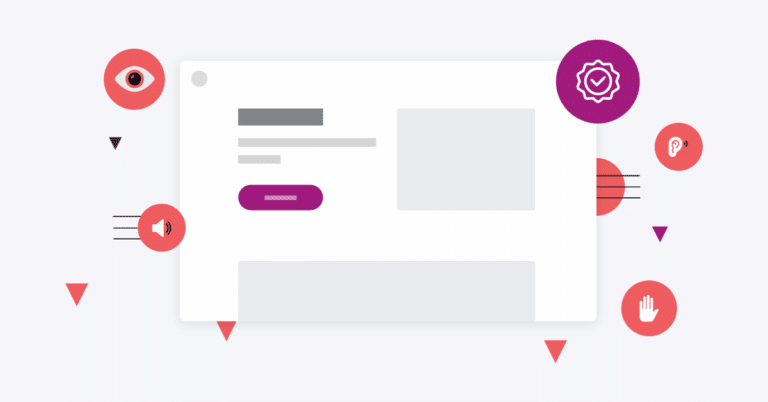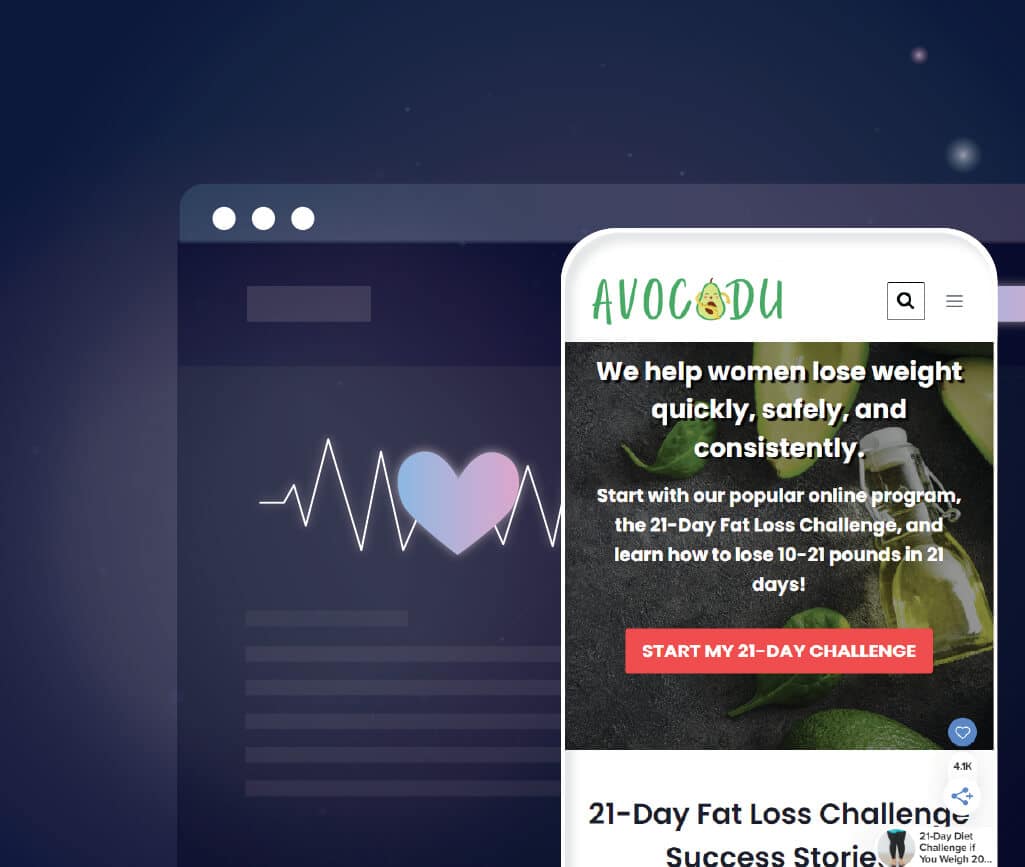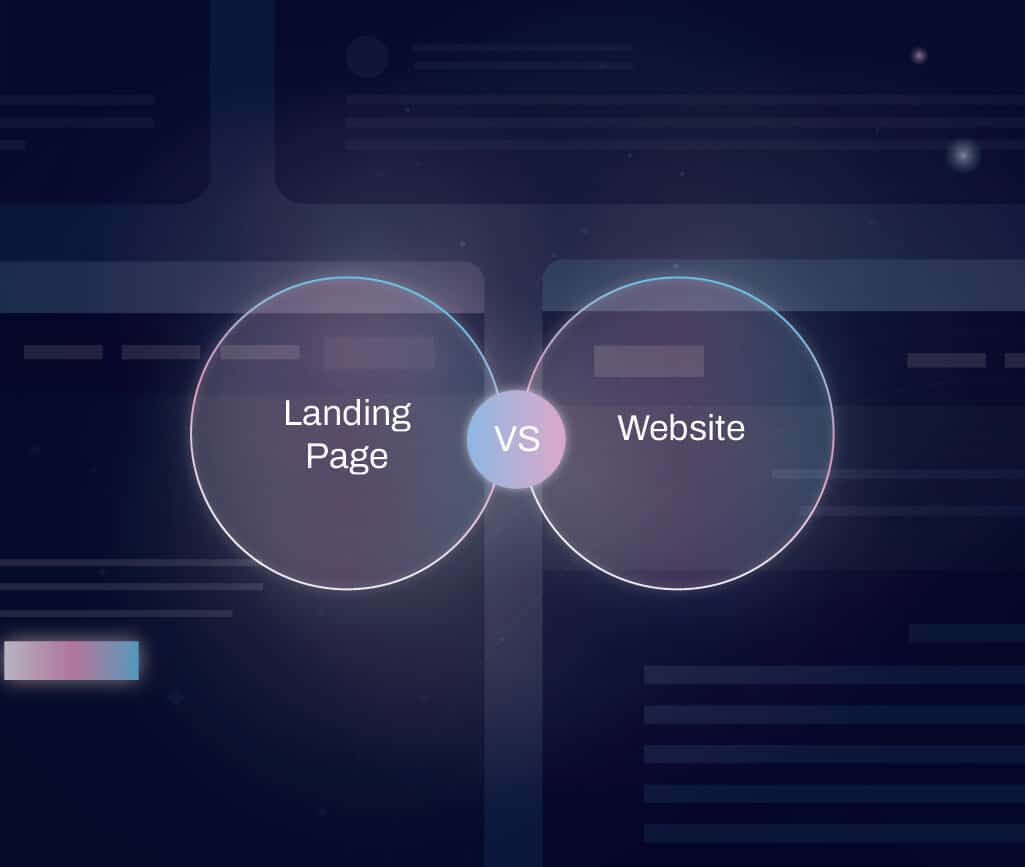Design
8 minute read
Website Design Standards We Follow [That You Should Too!].
LAST UPDATED:
April 4, 2023


Can you imagine how many websites consumers visit per year? By the time potential clients get to your site, they’ve likely seen hundreds of others. For this reason, these individuals already have a vague idea about design standards — exactly what to expect from a brand’s page in terms of appearance, design elements, web accessibility, and functionality.
Because of their previous viewing experiences, their instincts tell them where to find logos, navigation tools, and scroll bars. These predispositions require brands to adhere to specific norms to elevate the user experience (UX) and user expectations.
With the help of our experienced web designers and design team, we made a list of design standards we follow to create standout websites for our clients. Read on to discover which ones you can apply to propel your business to new heights.
Web design standards are guidelines that cover the look and behind-the-scenes performance of sites. Sticking to such specifications allows you to offer clear and consistent messaging across all pages. Most recommendations relate to aesthetics, but not all of them do.
From the users’ point of view, such standards ensure predictable experiences that make navigation intuitive. Other benefits of using these suggestions include:
- Achieving good first impressions
- Improving Google rankings
- Minimizing bounce rates
These benefits ultimately lead to a boost in leads, conversions, and revenue.
Remember that not all standards adhere to best design practices; they are two different things. However, we will only tackle factors that won’t harm your UX or Google rankings.
Are you ready to take your website to the next level? Let’s get right to it.
The latest web design statistics reveal that it only takes a whopping 0.05 seconds for visitors to decide whether they’ll stay or leave your site.
As much as people love saying, “Don’t judge a book by its cover,” they determine a brand’s credibility rather quickly. So, which factor affects these snap judgments the most? You guessed it: design! Consumers should take one look at your site and easily find what they need.
For example, check out ARNGREN’s website. It’s a Norwegian electronic company using a classified ads-type design. With a layout like this one, it’s hard to find products and navigate between pages.
Now, look at Luseta Beauty’s site. We created this web page for a brand of affordable all-natural, salon-quality hair care products. The layout allows maximum visibility and movability, making scrolling fun and easy. (Check out our case study to learn more about the design process of Luseta Beauty’s new website!)
As you can see, aesthetics matter. No matter how exceptional your products or services are, no one will believe you if your website doesn’t communicate your strengths to your end users.
Here are some pro tips to impose your online authority:
Stay mobile-friendly:
We all know mobile phones are super common, did you know that mobile phone search users in the U.S. have reached 200 million! If you don’t design for mobile devices, you miss countless opportunities to capture this population via search engines.
Protip
Consider various web browsers such as Google Chrome or Safari, test your website’s cross browser compatibility!
Observe consistency:
Use a holistic approach when building or revamping your website. Think of it as a whole instead of broken sections.

Avoid too much clutter:
While the ARNGREN example is a bit extreme, a minimalist website is the way to go. Check out these top retail websites for inspiration.
A 2019 consumer research shares jaw-dropping results — 94% of site visitors demand easily navigable websites from organizations. The modern consumer simply doesn’t have the patience to stay for non-standard placements, generic labels, and too many subcategories.
Apart from looking nice, websites should provide users with an intuitive flow that guides them every step of the way. If consumers have to find their way around your site, there’s something wrong with it. Below are web design standards and best practices most brands observe.
Place the main navigation options in the header:
Most websites do this, so consumers instinctively look at the top portion of your homepage to check your site’s contents. One great example includes the top left corner housing your company’s logo as this will help to increase user experience.
Consider using a dropdown menu:
This increases functionality as the visual hierarchy saves precious webpage space and makes the navigation process less overwhelming. However, make sure to use clear, concise labels. For example, using terms like products and solutions separately might confuse site visitors.
If dropdown menus aren’t for you, try hamburger menus:
Also called hamburger buttons, these tools are the three horizontal lines web pages use to offer more navigation options. Brands like Facebook, CNN, and MyFitnessPal use them.

Visual direction separates good designers from great ones. It means controlling the eye movement of a visitor to encourage desired actions. You can achieve this by leaving visual cues without compromising your web page’s aesthetics. Check out these visual direction best practices:
Use images to control movement:
You can guide consumers toward the content you want them to see through proper picture placement. For example, you can use pictures of real people pointing at a product. Don’t use photos just to fill spaces; instead, use them with purpose.

“All designs, good or bad, start with fonts, colors, and images. The differences are the decisions we make to balance the beauty and the purpose.”
– James Utkovic, Creative Director
Lead the eye:
Face pareidolia is the phenomenon wherein individuals naturally detect other people’s faces. Even when these faces are pictures on a website, visitors will follow their line of sight. For this reason, it’s essential to have models looking toward valuable information and never away from the page.

Illustrate concepts with images:
If you’re in the beauty industry and your unique selling proposition is that you have a three-in-one eye shadow-blush-lipstick product, it’s better to use photos than use 300 words to explain the idea. These standout beauty websites will show you how to do it right.
Social proof is the process of using the actions and attitudes of other people to affect another’s behavior. Do you ever wonder why word of mouth marketing impacts the purchasing decisions of 92% of consumers? It’s because there’s no higher form of social proof than recommendations from relatives and friends.
When building or upgrading the social proof portion of your site, remember that B2B and B2C web pages work differently. Here are essential factors to remember:
For B2B websites, using testimonials would be ideal. You can also use client logos, industry awards, and reviews from sites like G2 or Yelp. Check out these groundbreaking B2B websites for inspiration.

On the other hand, product reviews, customer testimonials, and media features work best for B2C websites.
Focus on return on investment (ROI) for B2B sites and pain points for B2C ones.
Today, there are 61 million disabled American adults. Most of them have mobility, cognitive, hearing, and vision disabilities that make it challenging to gain information. The Americans with Disabilities Act (ADA) requires websites to follow various design standards to address these individuals’ needs.
An ADA-compliant website ensures all users can access and navigate your site comfortably without discriminating anyone from using it for its intended purpose.
ADA broke down its website requirements into four categories. Web pages should be perceivable, operable, understandable, and robust.

Perceivable:
Brands should provide all users with information that they can distinguish and understand. Creators should develop content that consumers can easily see or hear regardless of disability. For instance, you should find alternative options for CAPTCHA.
Operable:
Organizations should make their websites navigable for people with disabilities. They shouldn’t experience limited functionalities or unreasonable time limits. If disabled people buy things online, they should have enough time to input their card details and one-time validation PIN code.
Understandable:
Websites should avoid consumer error at all costs by explaining processes thoroughly and confirming financial information before submitting an order.
Robust:
Content should be robust enough for all users to interpret. For example, your site should allow visitors to determine the name of a user interface form.
You might already have the aesthetics, navigation, social proof, and ADA compliance down. Don’t let long contact forms scare potential clients away. As much as possible, limit your questions to six and below.
Short contact forms on various landing pages convert more visitors. For this reason, we highly recommend removing anything unnecessary from these lead generation tools.

A powerful call to action (CTA) can help build social following, customer databases, and close sales. It all depends on what you ask your clients to do. For best results, focus on a single CTA instead of providing options for desired actions.
If you want potential clients to try your product for free, say it. Having them choose between learning about your offer, signing up for your mailing list, or buying your product or service can be quite daunting. Multiple actions can end up turning prospects away.

At Huemor, we help brands create web pages that make them stand out in a sea of competition. We do so while observing web design standards that boost their visibility, enhance their UX, and assert their online authority. No matter what size or industry you’re in, we will create a powerful story and channel it into an enjoyable experience for site visitors.
We know how frustrating building or redesigning a website can be. You have so much to say in such a small digital space. It takes a team of superstar web designers and marketing experts to create a website that converts random visitors into regular clients. Work with us to discover the power of a memorable website. Book a free consultation now to start your journey toward digital success.
Additional Reading
We recommend the following handy resources and guides as you navigate the world of web design and development!
The Huemor Process of Developing Websites
Our Top-Notch Website Design
Our Excellent Customer Service through Website Support
The Huemor Way of Optimizing Conversion Rates
How We Optimize Webpage Speed
Author
Jeff Gapinski is the President of Huemor where he helps plan the long-term strategic growth of the agency. Jeff is passionate about UI/UX, demand generation, and digital strategy.
What Do You Think?
Have feedback? Maybe some questions? Whatever it is, we'd love to hear from you.








No comments found